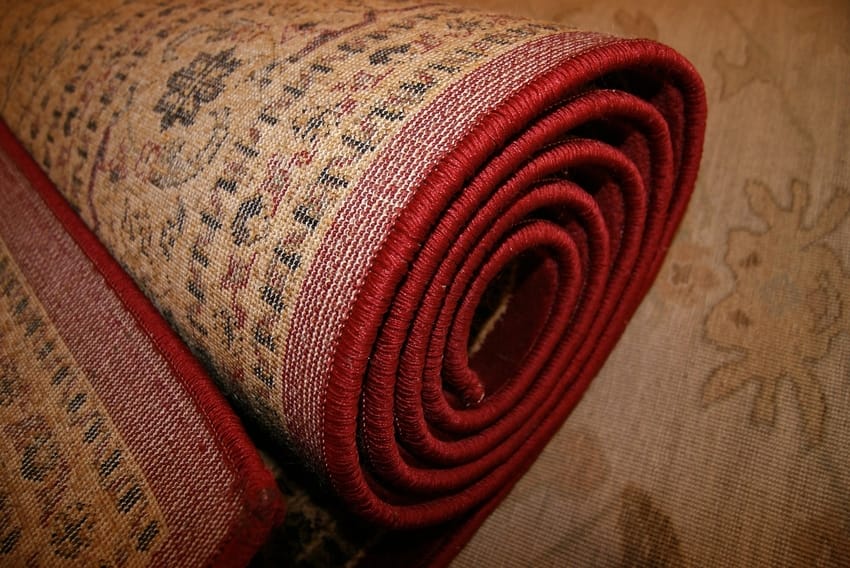
Maintaining the integrity and beauty of your house is a big chore. However, the results demonstrate pride not only in your residence and personal property, but all the effort you've put forth to achieve your goal of homeownership. One of the first things a visitor notices is flooring, and whether you choose hardwood, carpeting, tile, or linoleum, its condition makes an impression on people. If you own an area rug, storing it when not in use is the key to ensuring its beauty and longevity as well as selecting reputable carpet cleaning services when needed. Here’s some helpful information.
QUICK CLEANING TIPS TO REMEMBER
Like anything else in your home, an area rug will benefit from cleaning. Here are some quick tips to remember.
- Fully clean the rug.
- Safeguard the rug from insects, moths and other bugs or vermin.
- Snugly roll the rug before placing it in storage.
- Bind the rug in a defensive plastic or fabric wrap.
- Make sure to place the rug somewhere off the ground in a cool, moisture-free environment.
- Unroll the rug every few months and check for indications of damage.
HOW TO STORE YOUR RUG WHEN NOT IN USE – STEP BY STEP
- Clean the rug.
To begin the rug storage procedure, put the rug through a good vacuuming. Use a good, HEPA-quality vacuum to guarantee you suck up as much dust mites, dander, and other microscopic specks as you can. If your rug is valuable, please consult with the manufacturer for cleaning and storage tips or talk with a professional by searching for carpet cleaning near me for more information. We can’t stress enough that vacuuming may damage an area rug with delicate weaving.
Assuming you’ve gone the vacuuming route, you may not clean the rug per the manufacturer’s instructions. Different kinds of rugs (braided or woven; hand-knotted, handmade, or Persian; sisal, coir, rush, and grass rugs; or sheepskin, fur, and hair-on hides) require different cleaning methods, so be sure to check with product labels for instruction based on fabric type.
- Protect the rug from creepy crawlies.
If you must store an area rug in an attic, basement, or garage, please take extra care to protect it from insects and moths using a repellent that is specially made for carpeting.
- What about mothballs?
We get a lot of questions from customers about using mothballs. Your mother or grandmother may swear by their use when storing clothing or other delicate items for long periods, and while they can be used for carpets in storage, we recommend you use them sparingly. Here’s why.
“Mothballs are a pesticide product that contain either naphthalene or paradichlorobenzene as active ingredients. Both of these chemicals are toxic fumigants (which means they volatilize into the air) and must be present in high concentrations to be effective. This is the problem. Concentrations high enough to be effective for pest control can be dangerous for anyone exposed to them.”
If you’re not sure of the storage tips mentioned above, you also could store your rug – depending on its size – in a large, airtight container or bag. In fact, an extra-large clothing bag, the kind where you vacuum out any remaining air once an item is placed inside, is another storage option.
Roll ‘er up!
- Unless you’re happy with creases, cracks and other damage, you should never fold a rug or carpet. This method of storage will lead to damage. If you can roll the carpet, store it in a cylinder-shaped container if possible.To make sure you roll the rug properly, you have to decide which side is more susceptible to damage: the pile area containing the fibers or the backside of the rug. In most cases, the pile is more fragile, meaning an area rug should only be rolled with the pile facing inward.
- Wrap it in another protective fabric.
Wrapping a rug can be particularly helpful if you must transport or ship it between locations. An extra layer of protection will help keep out dirt, bugs, and moisture or other elements which may harm the delicate fibers. A preferred wrap is a cotton sheet or a muslin wrap.
- Keep the rug off the ground when in storage.
Any item that is left on the ground is bound to decay eventually, especially something as fragile as an area rug. Therefore it’s so important that storage shouldn’t mean rolling the carpet and dumping it on the garage or basement floor where it will come into contact with harmful elements.
Once rolled and stored, don’t pile anything on top of it. The weight from other items like boxes and other things will result in cracks and damage the rug’s shape. It is crucially important to store your area rug someplace cool and dry and preferably away from natural night.
- Check the rug every few months for signs of damage.
Finally, all carpet and rug cleaning services will offer the same advice. To be safe, unroll your area rug monthly to make sure you don’t see signs of bug infestation.
Steve’s Carpet Care has been in business for more than 40 years. We pride ourselves on exceptional customer service and believe a relationship with a client is based on mutual respect. Our expertise is worth sharing and helps you make informed decisions. Contact us today at (303) 530-4900 with questions!
